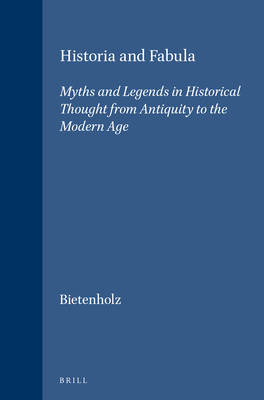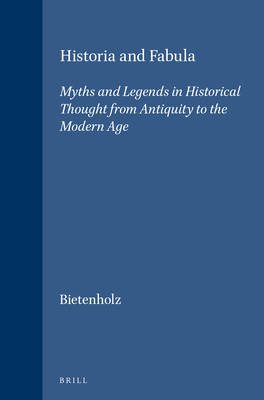
- Afhalen na 1 uur in een winkel met voorraad
- Gratis thuislevering in België vanaf € 30
- Ruim aanbod met 7 miljoen producten
- Afhalen na 1 uur in een winkel met voorraad
- Gratis thuislevering in België vanaf € 30
- Ruim aanbod met 7 miljoen producten
Zoeken
Historia and Fabula
Myths and Legends in Historical Thought from Antiquity to the Modern Age
Peter G Bietenholz
€ 245,95
+ 491 punten
Omschrijving
Historical thought, whether it is expressed in writing or through works of art, inevitably contains elements of fiction. Thus in every phase of the development of historical thinking the question arises: were these fictional elements recognized and if so, how was their function perceived? Was any effort made to distinguish between a documented fact and any assumptions or deductions related to it? In examining the past, was it deemed important to curb the free play of imagination or was it thought that any explanation, no matter how fanciful and irrational, was better than none? This is the question that this book attempts to answer. In doing so, it examines a rich variety of texts and also some works of art ranging from the Ancient Near East to the nineteenth century.
Specificaties
Betrokkenen
- Auteur(s):
- Uitgeverij:
Inhoud
- Aantal bladzijden:
- 458
- Taal:
- Engels
- Reeks:
- Reeksnummer:
- nr. 59
Eigenschappen
- Productcode (EAN):
- 9789004100633
- Verschijningsdatum:
- 1/09/1994
- Uitvoering:
- Hardcover
- Formaat:
- Genaaid
- Afmetingen:
- 168 mm x 243 mm
- Gewicht:
- 966 g

Alleen bij Standaard Boekhandel
+ 491 punten op je klantenkaart van Standaard Boekhandel
Beoordelingen
We publiceren alleen reviews die voldoen aan de voorwaarden voor reviews. Bekijk onze voorwaarden voor reviews.








